Whether you're growing English lavender for its classic fragrance, Spanish lavender for its vibrant blooms, or Lavandin for its robust growth, these lavender flowers thrive in any garden, pot or patio
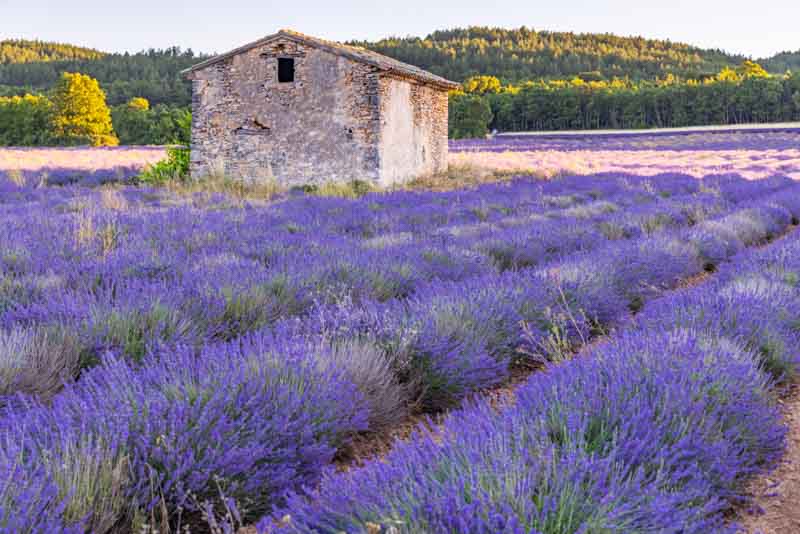
Lavender, with its enchanting fragrance, silvery-green foliage, and stunning purple spikes, stands out as one of the most beloved herbs worldwide. This shrub, belonging to the genus Lavandula, has been celebrated for centuries, not just for its beauty and fragrance but also for its extensive use in herbalism, perfumery, and culinary arts.
Lavender’s popularity is not just due to its aesthetic appeal; it also offers significant benefits for gardeners and homeowners.
English Lavender (Lavandula angustifolia): Known for its sweet fragrance and compact growth habit, ideal for borders and containers.
Spanish Lavender (Lavandula stoechas): Characterized by its showy, pineapple-shaped flower heads and strong aroma, suitable for Mediterranean climates.
Lavandin (Lavandula x intermedia): A hybrid between English and Spike lavender, valued for its robust growth and higher oil yield, commonly used in commercial production.
With its neat and tight bloom habit, Lavender ‘Folgate’ looks great year-round. The compact bush boasts narrow leaves and fragrant, iridescent violet blooms. Ideal for cut flowers and low hedges, it blooms once in mid to late spring. It may have additional flushes of flowers if pruned promptly. Hardy and resilient, ‘Folgate’ withstands cold temperatures and returns reliably each year.
| Hardiness | 5 - 9 |
|---|---|
| Exposure | Full Sun |
| Season of Interest |
Spring (Mid, Late) Summer (Early) |
| Height |
2' - 3' (60cm - 90cm) |
| Spread |
2' - 3' (60cm - 90cm) |
A delightful choice! Lavandula angustifolia ‘Munstead’ is a compact and highly fragrant Lavender with beautiful rosy purple flowers. It remains attractive year-round and thrives in containers, hedges, or knot gardens. Perfect for potpourris and dried arrangements, it blooms twice, starting in late spring or early summer, with a full second flush of blooms after the first harvest.
| Hardiness | 5 - 9 |
|---|---|
| Exposure | Full Sun |
| Season of Interest |
Spring (Late) Summer (Early, Mid) |
| Height |
1' - 2' (30cm - 60cm) |
| Spread |
2' - 3' (60cm - 90cm) |
Lavandula angustifolia ‘Imperial Gem’ dazzles with deep violet blooms atop silver-green foliage, reaching 18-24 inches in height and width. Ideal for borders, containers, and attracting pollinators, it blooms from late spring to early summer with the potential for a second flush of flowers in late summer or early autumn if spent blooms are deadheaded promptly.
| Hardiness | 5 - 9 |
|---|---|
| Exposure | Full Sun |
| Season of Interest |
Spring (Late) Summer (Early, Late) Fall |
| Height |
1' - 2' (30cm - 60cm) |
| Spread |
1' - 2' (30cm - 60cm) |
English Lavender ‘Hidcote’ is a beloved variety known for its fragrant, long-lasting blooms and striking contrast between dark purple flower spikes and blue-green foliage. It’s ideal for low hedges, edging, or borders. The flowers can be used for crafts and dried arrangements, as they retain their color. Blooms in late spring with potential for additional flushes if properly pruned.
| Hardiness | 5 - 9 |
|---|---|
| Exposure | Full Sun |
| Season of Interest |
Spring (Late) Summer (Early, Mid) |
| Height |
1' - 2' (30cm - 60cm) |
| Spread |
1' - 2' (30cm - 60cm) |
English Lavender ‘Little Lottie’ is a delightful dwarf variety with a captivating fragrance. It produces abundant light pink flower spikes, adding a charming touch to gardens and containers. Its compact and tidy growth habit makes it ideal for rockeries. Blooms once in late spring or early summer, with the potential for additional flushes if flowers are promptly cut.
| Hardiness | 5 - 9 |
|---|---|
| Exposure | Full Sun |
| Season of Interest |
Spring (Late) Summer (Early, Mid) |
| Height |
1' - 2' (30cm - 60cm) |
| Spread |
2' - 3' (60cm - 90cm) |
Highly fragrant, English Lavender ‘Miss Katherine’ is a stunning pink variety with spreading foliage and abundant deep pink flowers. Its long-lasting blooms and captivating fragrance make it one of the most desirable pink lavenders. Blooms once in late spring or early summer, with potential for additional flowering if promptly cut.
| Hardiness | 5 - 8 |
|---|---|
| Exposure | Full Sun |
| Season of Interest |
Spring (Late) Summer (Early, Mid) |
| Height |
2' - 3' (60cm - 90cm) |
| Spread |
2' - 3' (60cm - 90cm) |
Lavandula angustifolia ‘Nana Alba’ is a compact and highly floriferous dwarf Lavender. Its snow-white flowers on short spikes stand out against silvery-green foliage. Growing in a bushy dome, it is perfect for containers, white gardens, or small gardens. It blooms once in midsummer, with the potential for additional flushes if the flowers are pruned promptly.
| Hardiness | 5 - 9 |
|---|---|
| Exposure | Full Sun |
| Season of Interest |
Summer (Mid, Late) |
| Height |
10" - 1' (25cm - 30cm) |
| Spread |
1' - 2' (30cm - 60cm) |
Lavandula angustifolia ‘Lady’ is a compact, evergreen lavender with vivid violet-blue flowers and silver-green foliage. It blooms in late spring to early summer, attracting bees and butterflies. Ideal for borders and gardens, it’s valued for its fragrance, ornamental appeal, and uses in aromatherapy, culinary arts, and crafts.
| Hardiness | 5 - 9 |
|---|---|
| Exposure | Full Sun |
| Season of Interest |
Spring (Late) Summer (Early, Late) |
| Height |
8" - 10" (20cm - 25cm) |
| Spread |
8" - 10" (20cm - 25cm) |
Lavandula angustifolia Little Lady is a dwarf English Lavender with a compact, bushy habit, reaching 12-18 inches (30-45 cm) in height and width. It boasts fragrant, violet-blue flowers and silvery-green foliage, blooming from early to mid-summer. Ideal for small gardens, borders, and containers, it offers ornamental and aromatic benefits.
| Hardiness | 5 - 8 |
|---|---|
| Exposure | Full Sun |
| Season of Interest |
Summer (Early, Mid, Late) |
| Height |
1' - 2' (30cm - 60cm) |
| Spread |
1' - 2' (30cm - 60cm) |
A very attractive bicolor Lavender indeed! Lavandula stoechas ‘Ballerina’ features plump purple flower heads topped with long-lasting white flowers delicately fading to pink and purple as they mature. Highly aromatic silvery foliage. Great for mass planting, low hedges or containers. This French Lavender blooms almost continuously from mid-late spring to late summer.
| Hardiness | 8 - 9 |
|---|---|
| Exposure | Full Sun |
| Season of Interest |
Spring (Mid, Late) Summer (Early, Late) |
| Height |
1' - 2' (30cm - 60cm) |
| Spread |
1' - 2' (30cm - 60cm) |
Award-winning Lavandula stoechas ‘Pretty Polly’ boasts deep purple flower heads topped with long-lasting white bracts adorned with a soft green midrib. This French Lavender blooms almost continuously from mid-late spring to late summer.
| Hardiness | 8 - 10 |
|---|---|
| Exposure | Full Sun |
| Season of Interest |
Spring (Mid, Late) Summer (Early, Late) |
| Height |
1' - 2' (30cm - 60cm) |
| Spread |
1' - 2' (30cm - 60cm) |
Lavandula x intermedia ‘Grosso’ is a robust Lavender variety known for its intense fragrance. It showcases striking deep violet flower spikes, reaching up to 6 inches in length (15 cm), earning it the nickname ‘Fat Lavender’. ‘Grosso’ is ideal for crafting wands or sachets, as its flowers retain both their scent and color when dried. It blooms from mid to late summer, adding beauty and aroma to the garden.
| Hardiness | 5 - 8 |
|---|---|
| Exposure | Full Sun |
| Season of Interest |
Summer (Mid, Late) |
| Height |
2' - 3' (60cm - 90cm) |
| Spread |
2' - 3' (60cm - 90cm) |
Lavandula x intermedia ‘Hidcote Giant’ is a distinct and striking Lavender variety. It features abundant, large, and vibrant violet flower spikes, up to 2-4 inches long (5-10 cm), held high on elegant, outward-spraying stems. Known for its strong fragrance, it is favored for cut flowers and wand-making due to its long stems.
| Hardiness | 5 - 8 |
|---|---|
| Exposure | Full Sun |
| Season of Interest |
Summer (Mid, Late) |
| Height |
2' - 3' (60cm - 90cm) |
| Spread |
3' - 4' (90cm - 120cm) |
Compact and beautiful, Lavandula stoechas ‘Anouk’ features dark plum flower heads topped with long-lasting violet-blue bracts delicately fading to pink as they mature. Highly aromatic silvery foliage. Great for mass planting, low hedges, or containers. This French Lavender blooms almost continuously from mid-late spring to late summer.
| Hardiness | 6 - 10 |
|---|---|
| Exposure | Full Sun |
| Season of Interest |
Spring (Mid, Late) Summer (Early, Late) |
| Height |
1' - 2' (30cm - 60cm) |
| Spread |
1' - 2' (30cm - 60cm) |
Lavandin ‘Provence’ is a lavender variety that deserves many superlatives. It excels in humid summers, offers a strong fragrance, and is ideal for creating hedges. This prolific bloomer showcases exceptionally large flower spikes with beautiful pale lavender highlights from early to late summer. Known as ‘Fat Lavender’, its flower heads can reach up to 3 inches long (8 cm).
| Hardiness | 5 - 8 |
|---|---|
| Exposure | Full Sun |
| Season of Interest |
Summer (Mid, Late) |
| Height |
2' - 3' (60cm - 90cm) |
| Spread |
2' - 3' (60cm - 90cm) |
With its plump, cerise-crimson flower heads and long candy-pink bracts, Lavandula stoechas With Love™ is a stunning variety. It blooms almost continuously from mid-late spring to late summer, showcasing its highly aromatic silvery foliage. This heat-tolerant and disease-resistant lavender is perfect for gardens and containers, adding a distinctive and ravishing touch.
| Hardiness | 6 - 10 |
|---|---|
| Exposure | Full Sun |
| Season of Interest |
Spring (Mid, Late) Summer (Early, Late) |
| Height |
1' - 2' (30cm - 60cm) |
| Spread |
1' - 2' (30cm - 60cm) |
Beloved by gardeners, Lavandula angustifolia ‘Thumbelina Leigh’ is a charming and compact English Lavender. It boasts fragrant violet-blue flower spikes that bloom profusely from late spring to mid-summer. With its small size and long blooming season, it’s ideal for containers. It blooms once in early summer and may rebloom with proper deadheading.
| Hardiness | 5 - 9 |
|---|---|
| Exposure | Full Sun |
| Season of Interest |
Summer (Early, Mid) |
| Height |
10" - 1' (25cm - 30cm) |
| Spread |
10" - 1' (25cm - 30cm) |
Lavandula x intermedia ‘Phenomenal’ is an early bloomer among Lavandins, forming a compact, rounded shrub with silver-gray leaves. In midsummer, it produces long stems adorned with sweet-scented violet-blue flowers. It often reblooms in late summer or fall and is known for its exceptional winter survival, making it a great choice for the landscape.
| Hardiness | 5 - 9 |
|---|---|
| Exposure | Full Sun |
| Season of Interest |
Summer (Mid, Late) Fall |
| Height |
2' - 3' (60cm - 90cm) |
| Spread |
2' - 3' (60cm - 90cm) |
With its rich, velvety dark navy blue flowers, English Lavender ‘Royal Velvet’ is a captivating choice. The long stems and intense color make it perfect for cut flowers, and its rapid growth and tolerance to wet winters are highly valued. This lavender blooms twice, starting in late spring or early summer.
| Hardiness | 5 - 8 |
|---|---|
| Exposure | Full Sun |
| Season of Interest |
Spring (Late) Summer (Early, Mid) |
| Height |
2' - 3' (60cm - 90cm) |
| Spread |
2' - 3' (60cm - 90cm) |
Lavandula angustifolia Platinum Blonde offers unique appeal with its variegated green and creamy yellow leaves, complemented by classic purple lavender blooms. Perfect for adding texture and contrast to gardens or containers, it reaches 16-24 inches in height (40-60 cm) and attracts pollinators. Ideal for aromatic bouquets and culinary garnishes, thriving in full sun.
| Hardiness | 6 - 9 |
|---|---|
| Exposure | Full Sun |
| Season of Interest |
Spring (Late) Summer (Early, Late) |
| Height |
1' - 2' (30cm - 60cm) |
| Spread |
1' - 2' (30cm - 60cm) |
‘Lavenite Petite’ is a distinctive New Zealand lavender with compact, dense growth and pom-pom flower spikes. Its intense violet flowers and strong fragrance make it a top choice for containers. The short stems and tight foliage are ideal for drying. It blooms once in mid to late spring, with the possibility of a second, smaller flush if the flowers are pruned promptly.
| Hardiness | 5 - 9 |
|---|---|
| Exposure | Full Sun |
| Season of Interest |
Spring (Mid, Late) Summer (Early) |
| Height |
1' - 2' (30cm - 60cm) |
| Spread |
1' - 2' (30cm - 60cm) |
Lavandula angustifolia ‘Hidcote Pink’ is an exquisite English lavender variant, showcasing soft pink blooms atop gray-green foliage. Ideal for borders, containers, and attracting pollinators, it grows 24-30 inches tall and wide (60-75 cm). Blooming in late spring to early summer, it’s perfect for culinary, aromatic, and ornamental uses, thriving in full sun.
| Hardiness | 5 - 8 |
|---|---|
| Exposure | Full Sun |
| Season of Interest |
Spring (Late) Summer (Early, Late) |
| Height |
2' - 3' (60cm - 90cm) |
| Spread |
2' - 3' (60cm - 90cm) |
A delightful choice! Lavandula angustifolia ‘Rosea’ (Jean Davis) is a compact and strongly fragrant lavender with elegant upright pale pink flowers that beautifully contrast with the silver-gray foliage. It’s perfect for culinary use, containers, beds, borders, and formal knot gardens. Blooming once in late spring or early summer, it may have additional flushes if flowers are promptly cut.
| Hardiness | 5 - 9 |
|---|---|
| Exposure | Full Sun |
| Season of Interest |
Spring (Late) Summer (Early, Mid) |
| Height |
2' - 3' (60cm - 90cm) |
| Spread |
2' - 3' (60cm - 90cm) |
Lavandula angustifolia ‘Ellagance Purple’ is an award-winning English lavender with vibrant purple blooms and a compact habit, reaching 12-14 inches in height. Ideal for borders, containers, and attracting pollinators, it blooms from late spring to early summer, offering a rich fragrance perfect for culinary and aromatic uses.
| Hardiness | 5 - 8 |
|---|---|
| Exposure | Full Sun |
| Season of Interest |
Spring (Late) Summer (Early, Late) |
| Height |
1' - 2' (30cm - 60cm) |
| Spread |
10" - 1' (25cm - 30cm) |
Lavandula angustifolia ‘Hidcote Superior’ is a refined English lavender with compact growth, reaching 12-18 inches tall (30-45 cm). It boasts vibrant deep purple flowers and aromatic silvery-green foliage, ideal for borders, containers, and attracting pollinators. Perfect for culinary, craft, and ornamental uses, it thrives in full sun and well-drained soil.
| Hardiness | 5 - 8 |
|---|---|
| Exposure | Full Sun |
| Season of Interest |
Spring (Late) Summer (Early, Late) |
| Height |
1' - 2' (30cm - 60cm) |
| Spread |
1' - 2' (30cm - 60cm) |
There are many types and varieties of Lavender and finding the best Lavender plant for your needs might be a daunting task. To assist you in selecting the right plant, we have prepared this guide, which we hope will be helpful to you.
Trouble-free if grown in the right conditions, lavender is a wonderful addition to flower beds and containers thanks to its richly fragrant flowers and aromatic foliage.
To enjoy the delightful fragrance of your Lavender, long after its blossoms have faded, follow these easy steps.
While lavender is easy to grow, a few pruning rules have to be followed to get a healthy, beautifully shaped, mounded lavender plant that will last for years.
Since not all lavenders are hardy, containers provide the opportunity to grow lavender that would otherwise not be suited to your garden. Place them in a sunny spot (at least 6 hours of sunshine per day), provide the right soil and plenty of drainage, and your Lavender will happily blossom and grow!
Depending on where you live, you can enjoy Lavender blooms almost all year in your garden. Why? Because not all Lavenders bloom at the same time and some bloom continuously, producing flowers all spring and summer.
There is a wide array of pretty drought tolerant plants that complement lavender in color, height and bloom season, and will help you create many effective combinations. Transforming a parched, dry spot into a lush, colorful and delightfully fragrant garden is possible!
Lavender (Lavandula) includes about 47 species, which are cultivated in temperate climates either as ornamental plants for the landscape or for the extraction of essential oils. Which one will you fall for?
Dozens of Lavender varieties are available and finding the right Lavender plant for your favorite containers is not always an easy task. To assist you in selecting the right plant, we have prepared this guide, which we hope will be helpful to you.
Create curb appeal and learn how to create a stunning lavender hedge. There is nothing more charming than the perfume released when brushing the flowers as you pass!
Not all Lavenders are created equal! Some varieties are wonderful as accent plants but have little fragrance. To assist you in selecting the right plant, we have prepared this guide, which we hope will be helpful to you.
Crafting an enchanting hedge in your garden is a rewarding endeavor. Hedges serve as living boundaries, offering privacy, beauty, and structure. Explore a world of possibilities with various shrubs, each contributing its unique charm to create the hedge that suits your landscape vision.
Ideal for container gardening, select shrubs like compact evergreens, dwarf flowering varieties, and hardy herbs offer year-round appeal and versatility. Adaptable to limited space, these shrubs provide a lush, vibrant display on patios, balconies, and terraces, enhancing outdoor living areas with minimal maintenance and maximum beauty.
Discover the perfect flowering shrubs for small gardens. These compact beauties offer vibrant blooms, lush foliage, and space-saving charm, enhancing your small garden’s allure without overwhelming it.
Small evergreen shrubs are the unsung heroes of landscaping, providing year-round beauty without the hassle. Boxwood, lavender, and other varieties offer enduring charm, require minimal maintenance, and thrive effortlessly in your garden, making them the perfect choice for a vibrant, low-maintenance landscape.
Enhance your garden with flowering shrubs that love the sun! These vibrant, sun-loving plants bring color, fragrance, and life, even in the brightest spots. Ideal for creating dynamic landscapes, they offer varied blooms and sizes, perfect for any garden seeking a burst of color and natural beauty.
Blue flowers, symbolizing serenity and tranquility, add a unique and soothing touch to any garden. From the vibrant azure of delphiniums to the subtle hues of bluebells, these blooms create a cooling effect, contrasting beautifully with warmer colors. They attract pollinators and add a rare and enchanting element to landscapes.
As the warmth of summer fades and leaves begin to turn, certain small trees and shrubs grace the autumn landscape with their blossoms. These botanical marvels, including witch hazel, beautyberry, camellia and rose of sharon, bring bursts of color and vibrancy, enriching the fall scenery and delighting garden enthusiasts with their late-season blooms.
Small trees and shrubs that bloom in winter offer a rare and enchanting spectacle, defying the dormant season with their vibrant blossoms. These resilient species illuminate the garden with their colorful flowers, providing unexpected joy and a feast for the senses during the coldest months, while offering crucial sustenance to local wildlife.
Small trees and shrubs, particularly those that bear fruits or berries, play a pivotal role in attracting a variety of birds, including American Robins, Bluebirds, Mockingbirds, Blue Jays, Goldfinches, House Finches, and Northern Cardinals. These plants offer birds nourishment through their fruits and seeds, and provide shelter and nesting sites, enhancing biodiversity in gardens and wild areas.
Choosing the “best” type of lavender depends on various factors such as climate, soil conditions, and personal preference. However, Lavandula angustifolia, commonly known as English lavender, is often recommended for its strong fragrance, beautiful blooms, and versatility in gardens. Some popular cultivars include ‘Munstead’ and ‘Hidcote’.
Lavandula x intermedia varieties, such as ‘Grosso’ or ‘Provence’, are known for their relatively fast growth compared to other lavender species. They can quickly establish themselves and produce abundant foliage and flowers under the right growing conditions.
Lavender, particularly varieties like Lavandula angustifolia and Lavandula x intermedia, is known for its insect-repelling properties, including mosquitoes. However, it’s important to note that while lavender may help deter mosquitoes, it’s not a foolproof method for mosquito control.
Yes, lavender is a perennial plant, meaning it will come back year after year with proper care. Lavender plants are known for their longevity and can thrive for several years in the right growing conditions.
Lavender plants tend to grow in clumps rather than spreading aggressively like some other plants. However, over time, a lavender plant may expand its footprint as it sends out new shoots from the base of the plant.
While there is no scientific evidence to suggest that spiders specifically hate lavender, some people believe that the scent of lavender may help repel spiders and other insects. However, the effectiveness of lavender as a spider repellent may vary depending on factors such as concentration, environment, and individual spider species.

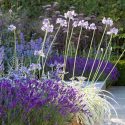

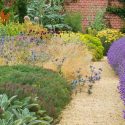
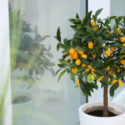
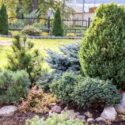
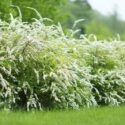

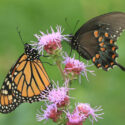

Create a membership account to save your garden designs and to view them on any device.
Becoming a contributing member of Gardenia is easy and can be done in just a few minutes. If you provide us with your name, email address and the payment of a modest $25 annual membership fee, you will become a full member, enabling you to design and save up to 25 of your garden design ideas.
Join now and start creating your dream garden!
Create a membership account to save your garden designs and to view them on any device.
Becoming a contributing member of Gardenia is easy and can be done in just a few minutes. If you provide us with your name, email address and the payment of a modest $25 annual membership fee, you will become a full member, enabling you to design and save up to 25 of your garden design ideas.
Join now and start creating your dream garden!